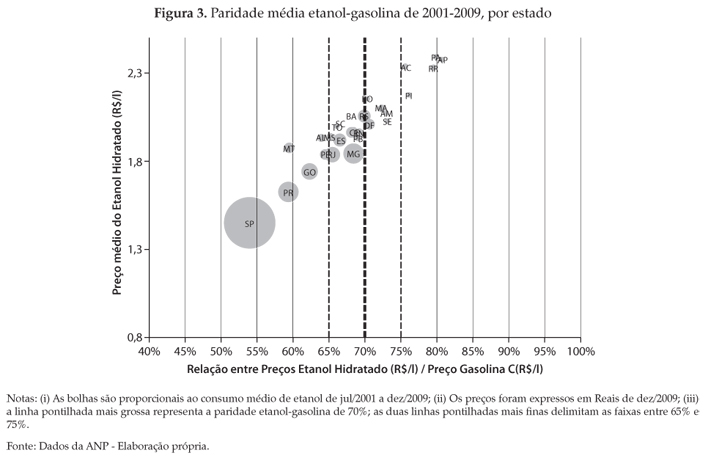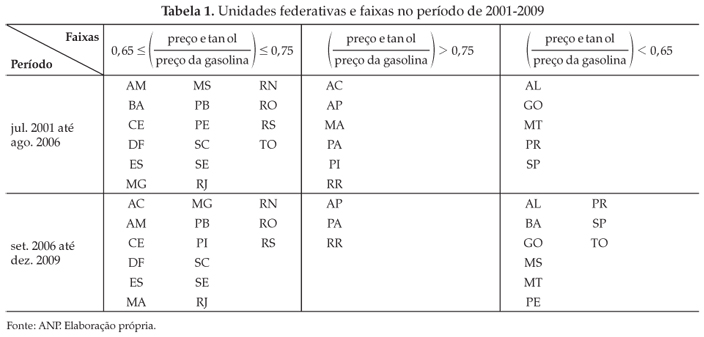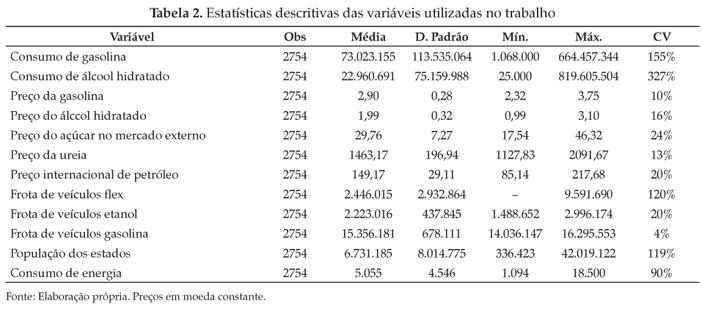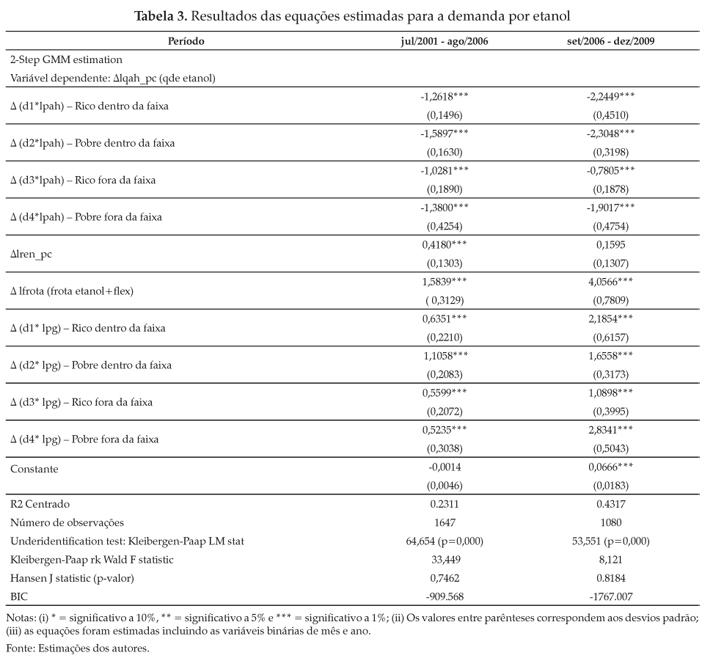This article analyzes the demand for ethanol in Brazil, from 2001 to 2009, taking into account regional differences in regard of relative price and per capita income. These elements explain significant variability of demand elasticities across regions, a result not yet addressed by the related literature. By means of a panel with monthly data at the state level, we estimate an econometric model with instrumental variables to control endogeneity. We found that the demand is more elastic in poorer states and in regions whose relative price is closer to 70%, the technical rate of substitution between ethanol and gasoline, which is expected to trigger the demand decision of owners of flex-fuel vehicles. Those regions present higher demand price-elasticity, for ultimately logistic and tributary reasons, that determines relative prices. Results differ from those from Salvo and Huse (2013), since our model explain regional differences that do not need to rely on consumer preference heterogeneity, but occur because of logistics and income regional distribution. Our findings suggest implications for taxation and logistic infrastructure policies, which directly affect the relative prices of ethanol and gasoline, and, therefore, indirectly influence the demand elasticity.
Demand elasticity; ethanol; income effect; regional differences

















